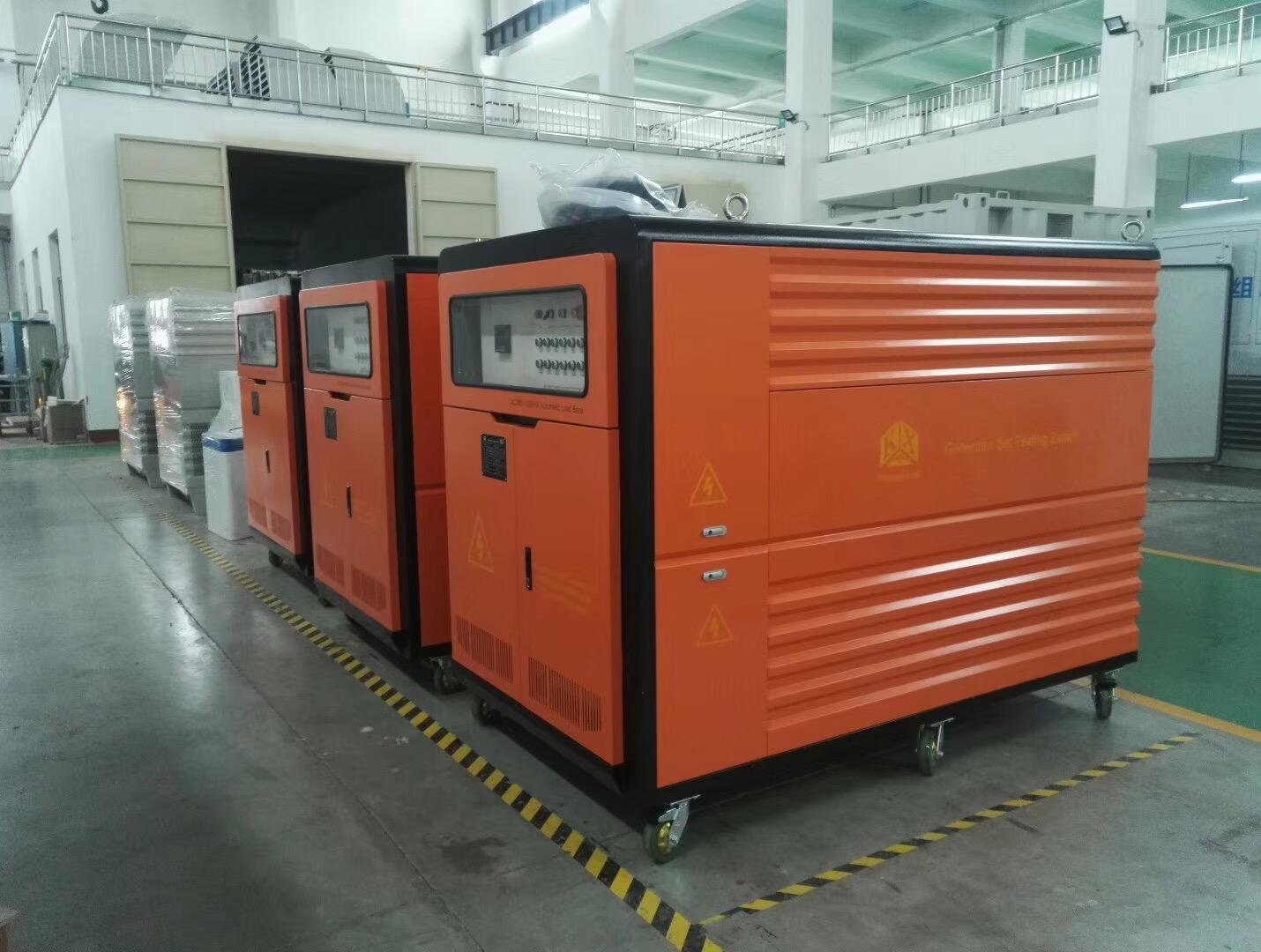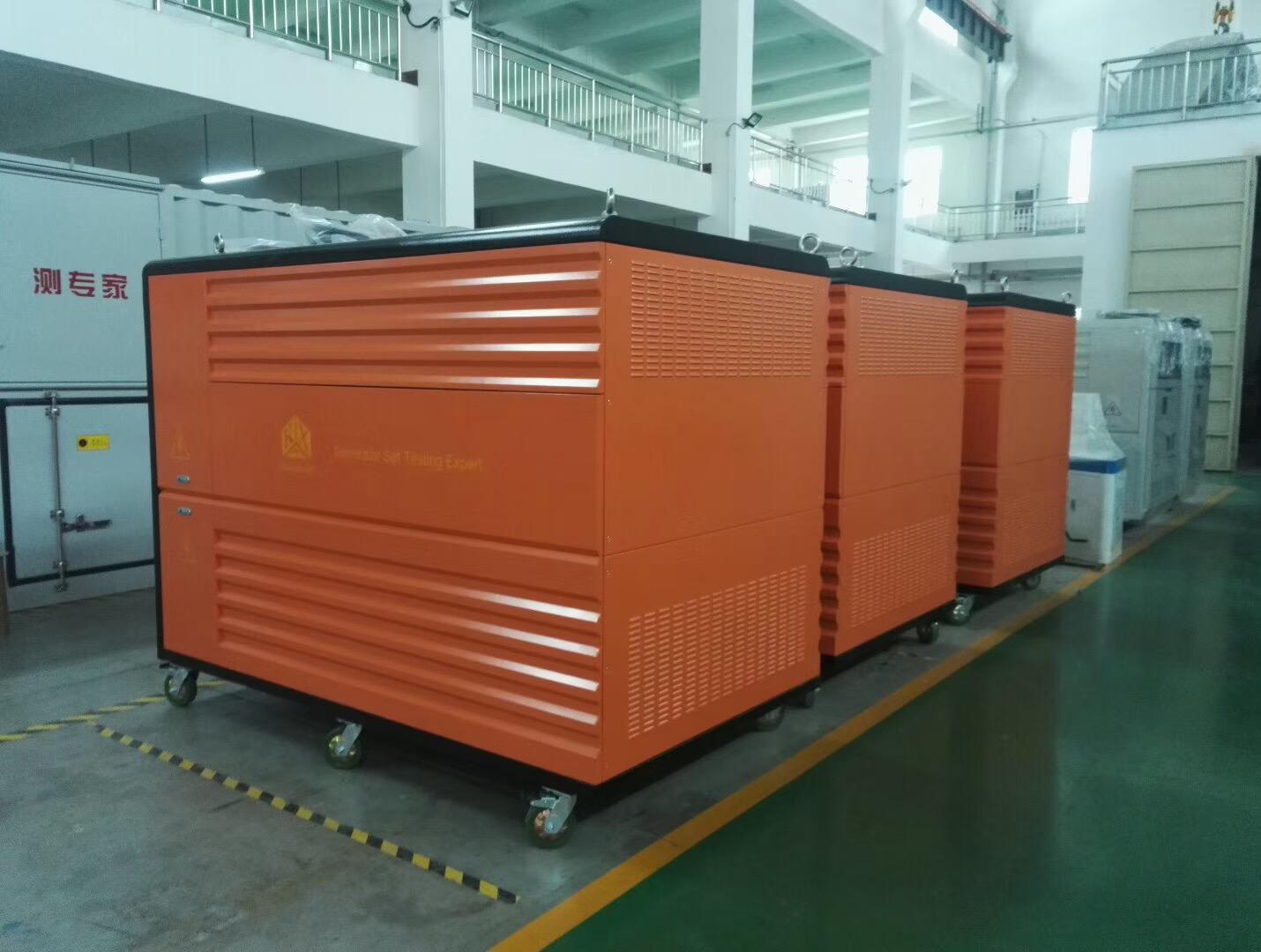What is a Load Bank
3 units 480V 1000kW Resistive Load Banks exported to Brazil in Jan 2018.
A Load Bank is a device which develops an electrical load, applies the load to an electrical power source and converts or dissipates the resultant power output of the source. A Load Bank is intended to accurately mimic the operational or “real” load which a power source will see in actual application.
However, unlike the “real” load, which is likely to be dispersed, unpredictable and random in value, a
Load Bank provides a contained, organized and fully controllable load. Consequently, a Load Bank can be further defined as a self-contained, unitized, systematic device which includes both load elements with control and accessory devices required for operation.
Where the “real” load is served by the power source and uses the energy output of the source for some productive purpose, the Load Bank serves the power source, using its energy output to test, support or protect the power source.
Applications
Load Banks are used with Engine Generators, Battery Systems, UPS Systems, Inverters, Ground Power Units, Auxiliary Power Units, Aircraft Power Generators, Wind Generators, and Hydro Generators.
Load Banks can be used for several purposes, including:
Manufacturing Testing
Generator Test Cells
Manufacturers of standby power generators commonly use load banks to test and tune newly assembled units.
When the generator has been set up in a test cell within the factory, a test engineer uses the load bank to apply a discrete, selectable electrical load to the generator and measure the response stability and endurance. During this process, the test engineer calibrates and adjusts the generator performance to ensure it meets the intended product specifications and tolerances.
Engine Test Cells
Manufacturers of small gas engines also use load banks to test newly manufactured engines under various mechanical loads. This is accomplished by connecting the engine to the load bank via a device called a dynamometer. Again, engine performance is monitored and, if necessary, adjustments are made to ensure the product performs within intended specifications.
Field Testing & Exercise
Generators installed in the field must be periodically tested and exercised to ensure that it will operate as intended when a power outage actually occurs. Service groups use load banks to apply a load that mimics the load of the facility the generator is protecting. Any problems with the generator can then be identified and rectified in a non-critical environment.
Simplex Load Banks can be used to satisfy the requirements of the National Fire Protection Association (NFPA) for emergency stand-by power systems. These requirements concern acceptance testing and periodic on-site testing and maintenance of emergency and stand-by power systems. The essence of the requirements is that emergency and stand-by power systems are to be tested under load.
Elimination of ‘Wet Stacking’
Load banks may be installed in a diesel powered generator set to apply the additional load required to ensure the engine fully consumes the fuel in the combustion process. If a diesel engine is not operated under adequate load, unconsumed fuel will collect in the engine’s exhaust stack and form an oily coating.
Demonstration
Load banks are often used as tool for demonstrating to buyers and users of a new generator set that the unit meets the performance specifications outlined in the purchase contract.


